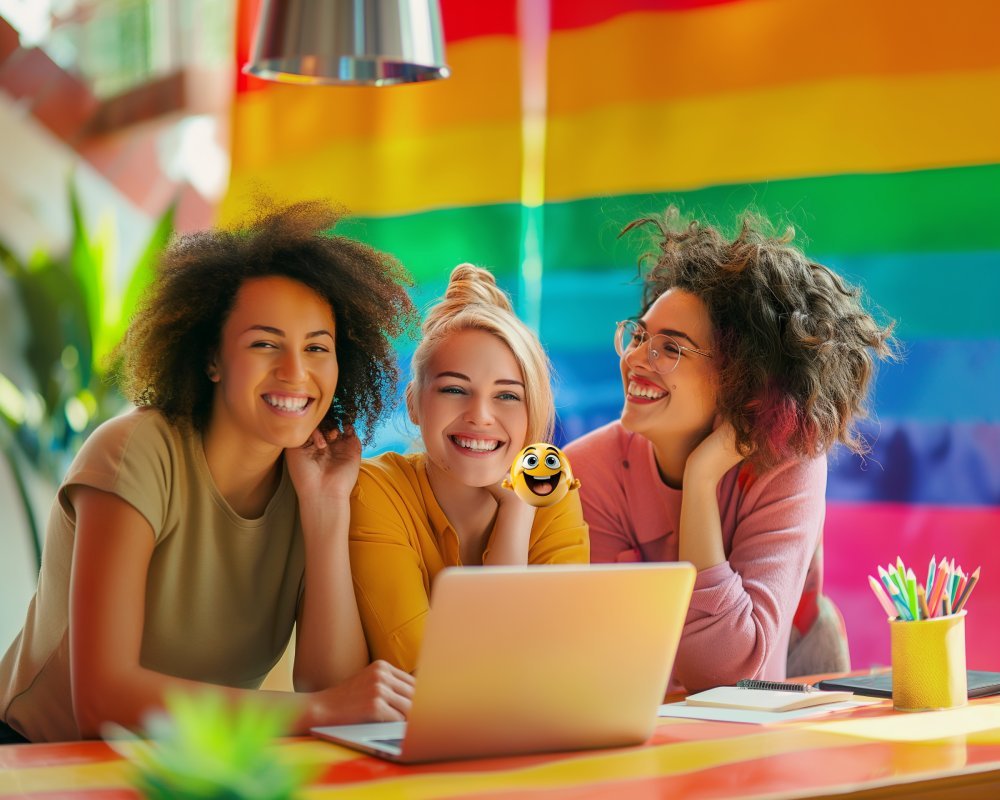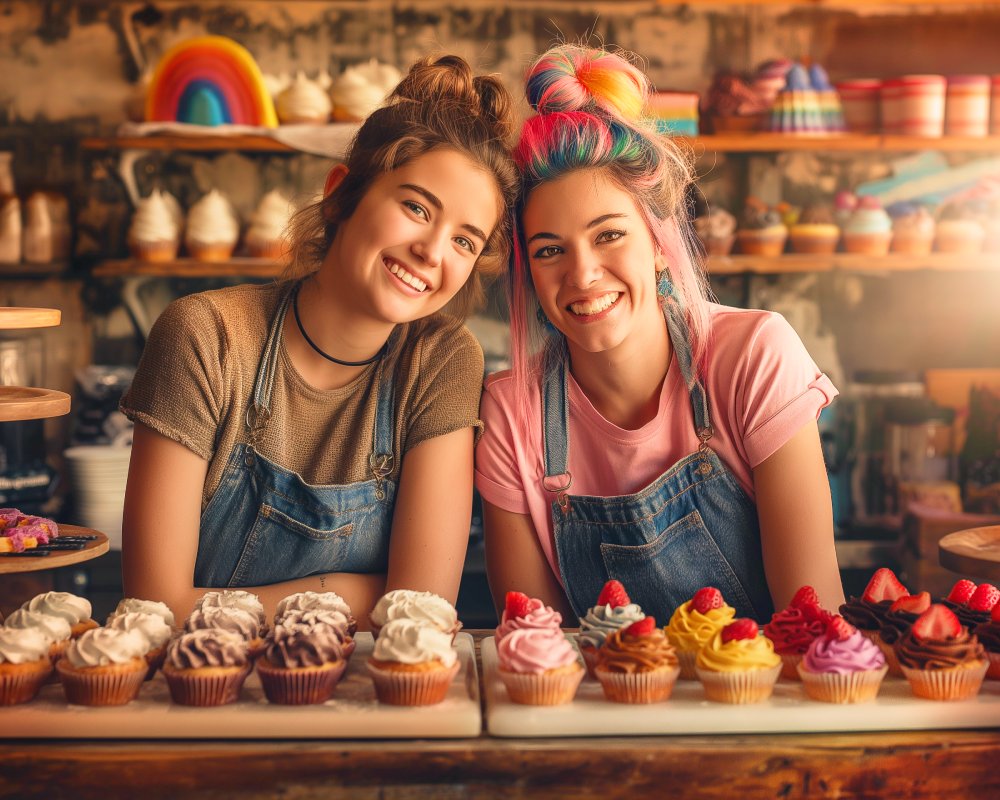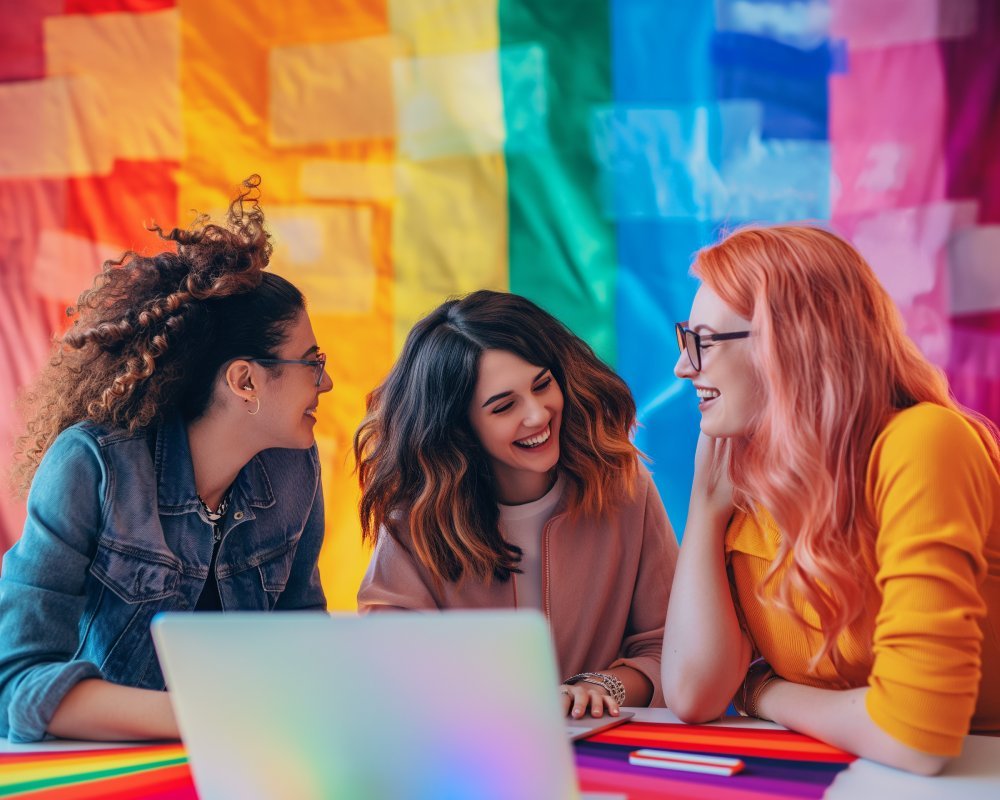
Why Advertisers Are Failing to Represent Lesbians? The advertising industry has made strides in representing various minority groups, but lesbians remain one of the least well-represented. This gap puts brands at risk of alienating a significant group of potential customers. At Gay Thrive LGBTQ+ Marketing Agency, we offer tailored marketing solutions to help businesses connect authentically with the LGBTQ+ community. In this blog, we’ll explore why advertisers are failing to represent lesbians and how brands can improve their marketing strategies.
The Current State of Lesbian Representation in Advertising
Research reveals a stark underrepresentation of lesbians in advertising. A study by Lloyds Banking Group in 2016 found that only 19% of people featured in ads were from minority groups, with just 0.06% representing the LGBT community, despite this group constituting 1.7% of the British population. Additionally, 79% of consumers surveyed believed that gay women were underrepresented in advertising. This sentiment was higher than for other groups, including bisexual people (56%) and gay men (49%).

Historical Context: The ‘Pink Pound’ and Its Impact
Historically, gay men have received more visibility in advertising due to the perceived economic advantages of the ‘pink pound’—a term used to describe the purchasing power of gay men, often characterized by dual incomes and no children. This economic perception led to more frequent portrayals of gay men in advertising, whereas the representation of lesbians remained sparse and often stereotypical.
Advertisement · Scroll to continue
Recommended
Common Stereotypes and Their Consequences
Ana-Isabel Nölke, during her research at the University of Edinburgh Business School, identified four main stereotypes of lesbians in advertising:
- Lipstick Lesbians: Overly sexualized and feminine, often depicted in pairs, their lesbianism portrayed as a disappointment to men.
- Femmes: Very feminine but not sexualized, often shown in stable relationships.
- Domestic Femmes: Feminine women depicted in domestic settings, doing household chores or raising children.
- Soft Butch: Recent portrayal of more feminine women with short hair, adhering to accepted standards of femininity.

The Shift Toward Safe Portrayals
Benjamin Antoniou, previously a diversity and inclusion manager at Dentsu Aegis Network, notes a shift towards ‘safe’ portrayals of lesbians in advertising. These representations are often sanitized and palatable, showing lesbian couples who could ‘pass as straight’ to avoid controversy. This approach aims to normalize lesbian couples to straight audiences but fails to reflect the diversity and reality of lesbian experiences.
The Risk of Backlash
Brands that deviate from safe portrayals can face backlash, as seen with Match.com’s ad featuring two women undressing each other, which became one of the most complained-about ads in 2016. This kind of response can deter brands from representing lesbians, but it underscores the need for greater representation to normalize these portrayals and reduce shock value.

Advertisement · Scroll to continue
Recommended
The Need for Authentic Representation
Why Advertisers Are Failing to Represent Lesbians? Claudia Carvell from the LGBT Foundation highlights the real-world impact of poor representation, stating that many gay women feel advertising is not relevant to them. This lack of engagement is due to tokenistic portrayals and a focus on satisfying the male gaze. Brands must challenge these norms and provide diverse and authentic representations of lesbians.
Strategies for Better Representation
- Inclusive Imagery and Language: Use diverse and authentic imagery and language that reflects the reality of lesbian lives.
- Supporting LGBTQ+ Causes: Partner with LGBTQ+ organizations and support relevant causes to demonstrate a genuine commitment.
- Diverse Creative Teams: Ensure that creative teams include LGBTQ+ members to bring authentic perspectives to the table.
- Engagement with the Community: Engage with the lesbian community for feedback and incorporate their insights into marketing strategies.

Case Studies of Successful Representation with Lesbians
Some brands have successfully represented lesbians in their advertising:
- Nike: Featuring lesbian athletes in campaigns and supporting LGBTQ+ rights.
- Absolut Vodka: Long history of LGBTQ+ support with campaigns resonating with lesbians.
- Netflix: Consistent inclusion of lesbian characters and storylines in its content.
Conclusion: Why Advertisers Are Failing to Represent Lesbians? Moving Forward
Why Advertisers Are Failing to Represent Lesbians? The future of advertising should include a more balanced and authentic representation of lesbians. Brands need to move beyond safe and sanitized portrayals to reflect the diversity and reality of lesbian experiences. At Gay Thrive LGBTQ+ Marketing Agency, we are dedicated to helping brands achieve these goals.

FAQs on Why Advertisers Are Failing to Represent Lesbians
Why is representation of lesbians in advertising important?
Representation is crucial as it ensures lesbians feel seen, valued, and respected, helping brands build a loyal customer base and a positive reputation for inclusivity.
How can brands avoid tokenism in their advertising?
Brands can avoid tokenism by genuinely supporting LGBTQ+ rights, partnering with relevant organizations, and providing diverse and authentic portrayals of lesbians.
What are the common stereotypes of lesbians in advertising?
Common stereotypes include overly sexualized ‘lipstick lesbians,’ feminine ‘femmes,’ domestic femmes focused on household roles, and ‘soft butch’ portrayals adhering to feminine standards.
How can brands handle backlash against lesbian representation?
Brands should remain committed to authentic representation despite backlash, using it as an opportunity to lead change and normalize diverse portrayals.
What role do creative teams play in representing lesbians?
Diverse creative teams bring authentic perspectives and experiences, ensuring that representations of lesbians are accurate and respectful.

How can brands measure the success of their efforts to represent lesbians?
Success can be measured through engagement metrics, feedback from the lesbian community, increased brand loyalty, and positive brand perception. Surveys and focus groups can also provide valuable insights.
By following these strategies and insights, brands can improve their representation of lesbians in advertising, creating meaningful connections and driving positive outcomes for both the brand and the community. At Gay Thrive LGBTQ+ Marketing Agency, we are committed to helping brands navigate this landscape authentically and effectively.
Advertisement · Scroll to continue

More Recommended
Why it’s time for brands to embrace diversity in their marketing strategies
Diversity in Marketing: Embracing LGBTQ+ Communities In today’s ever-evolving world of marketing, it’s crucial for [...]
Why LGBTQ+ Representation in Marketing is Important
Why LGBTQ+ Representation in Marketing is Important – In the rapidly evolving world of marketing, [...]
Best LGBTQ+ Hostels for Budget Travelers in New York
Best LGBTQ+ Hostels for Budget Travelers in New York – When it comes to budget [...]
Why Are Gay Rights Important for Everyone?
Why Are Gay Rights Important for Everyone? – As society continues to progress and evolve, [...]
Best LGBTQ+ Hostels for Budget Travelers in San Francisco
Best LGBTQ+ Hostels for Budget Travelers in San Francisco – San Francisco, known for its [...]
Top Lesbian Travel Groups, Ultimate Guide
Top Lesbian Travel Groups: Your Ultimate Guide to LGBTQ+ Adventures Around the World Top Lesbian [...]
How to Create a Gay-Friendly Social Environment
How to Create a Gay-Friendly Social Environment – Creating a gay-friendly social environment is not [...]
How Target is Leading the Charge in Inclusive Marketing to Lesbian Consumers
How Target is Leading the Charge in Inclusive Marketing to Lesbian Consumers When it comes [...]
Best LGBTQ+ Walking Tours in Major Cities
Best LGBTQ+ Walking Tours in Major Cities – Exploring a new city is always exciting, [...]